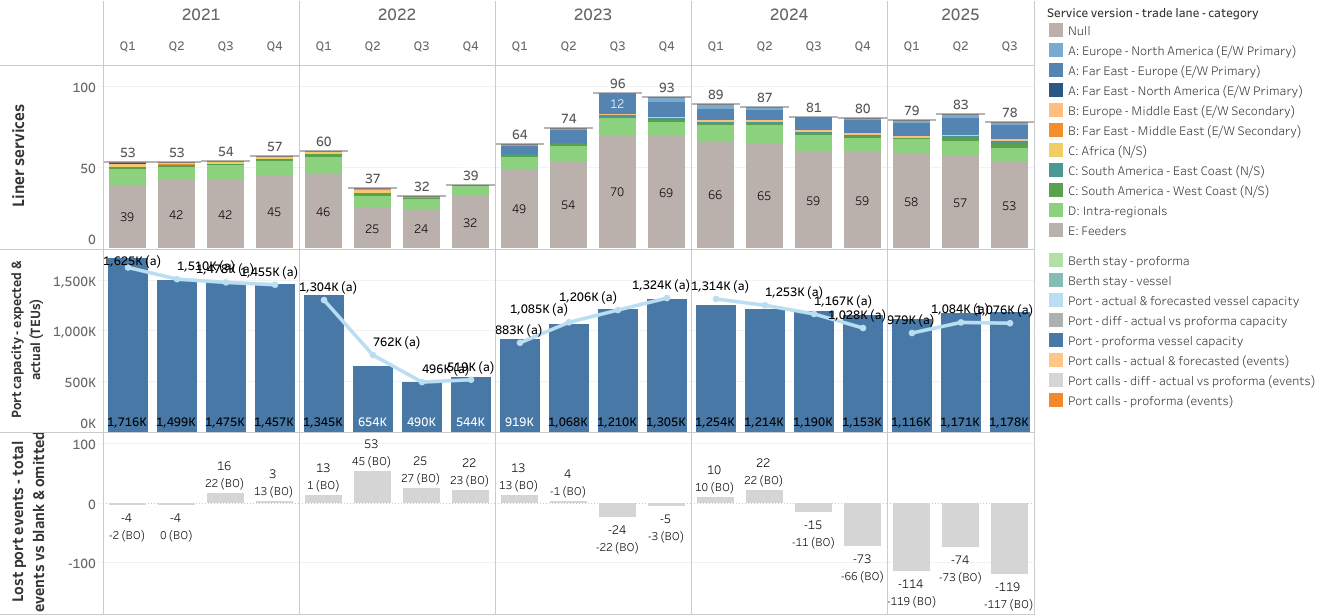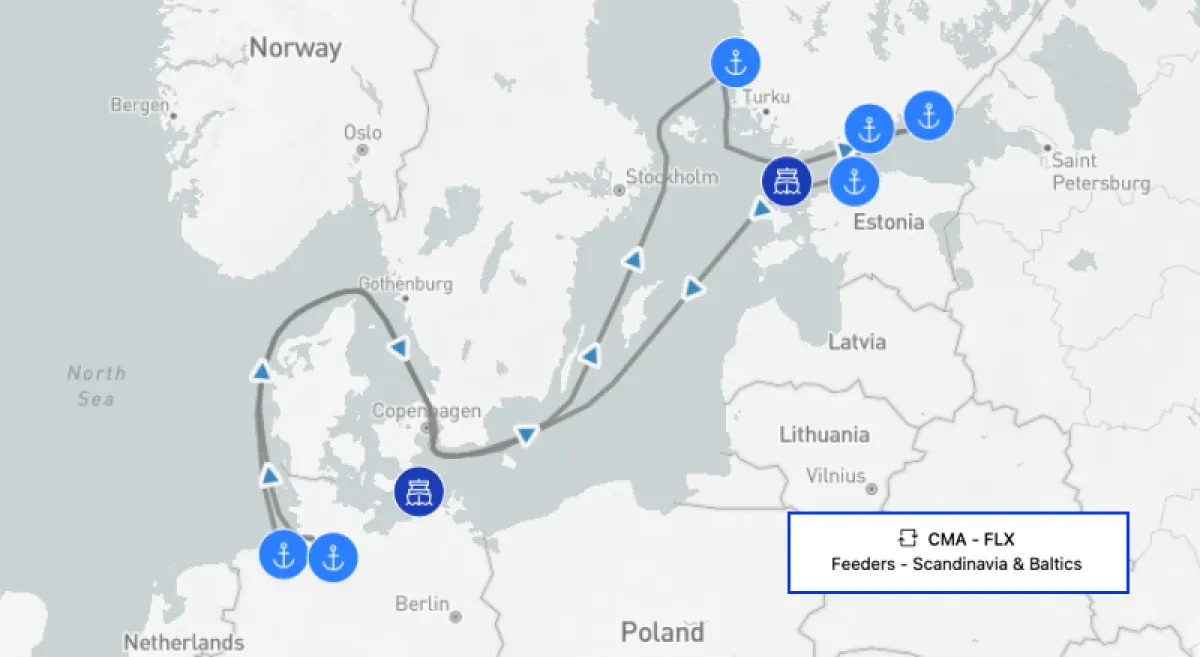CMA CGM is no stranger to traversing politically charged waters avoided by peers as they continue to make headlines for their covert Suez Canal transits. As of mid-October, it seemed they were on track to keep up this pioneering pattern by adding a fresh call to Saint Petersburg on their FLX Baltic feeder service. The weekly service currently hosts 2 vessels of an average 1,408 TEU capacity and connects Finland to Germany and Estonia. The first call to Russia were reportedly meant to commence with the arrival of the vessel NORTH on November 17.
Plans aside, our analysts have failed to detect confirmation of upcoming calls to Saint Petersburg on either the CONTAINERSHIP STELLAR or NORTH via the carrier’s vessel schedules. The lack of visibility has persisted throughout the past month and continues to delay the creation of a new service version in the eeSea database. The NORTH departed the port of HaminaKotka in Finland on Tuesday and forecasted to arrive in Hamburg on November 22.
CMA CGM's announcement in October inspired the usual intrigue, with industry experts immediately speculating which major carrier might be next in line to reintroduce Russian connections. Maersk and Hapag-Lloyd have firmly stated that their position remains unchanged but that they continue to evaluate the situation on a regular basis.
MSC on the other hand, has continued operating the BAL02 and BAL04 feeder services connecting Russia to Northern Europe long since the outbreak of the war. The BAL04 is a dedicated direct Saint Petersburg – Klaipeda connection that was introduced and maintained since August 2022. Aside from the Sunrise and Golden Horn services in the Far East, MSC operates the European intraregional Line B that connects Russia to Turkey, Greece, Egypt, and Italy.
In a noteworthy move, MSC quietly introduced a connection to Saint Petersburg on their ECUADOR-NWC-USA service back in May. This enabled them to sidestep the need to transship 5,000 TEU of weekly reefer capacity from Latin America to Russia through Antwerp. Just this week, MSC updated their transatlantic flyer to reveal all westbound European calls except Bremerhaven have been dropped on the string. The ECUADOR-NWC-USA is just one of three services connecting the United States to Russia, the others belonging to the US based micro-carrier ARRC Line. Globally, there are just twelve non-intraregional/feeder services operating in Russia, with Türkiye's M-LINE representing a majority of three offerings.
Russia - Global Port Connections + Proforma Transit Times

Despite the mildly heightened attention from two major global carriers, we’re unlikely to see a drastic uptick in Russian market growth soon. Many regional carriers that capitalized on the market gap after the war began, including Dubai based Reel Shipping and the recently bankrupt CSTAR lines, have been scaling back operations due to flat rates and the impact of sanctions on Russian export production. In 2023 we witnessed a massive influx of 36 new strings connecting to Russia and a 51% growth in monthly proforma capacity up to 450K monthly TEU by the close of the year. This activity has plateaued since H2 2024, now averaging 395K TEU of monthly proforma capacity in the past 6 months, a 12% reduction since the peak in H1 2024.
Russia - Trade Capacity Index (TCI) + Schedule Reliability Evolution

For the latest insights on high-risk corridors, blank sailings, network changes, and freight rate developments follow the eeSea's news page and subscribe to Xeneta’s newsletter.
eeSea Signals
- NORTH Vessel Timeline + Forecasts
- All Current + Future Services Calling Saint Petersburg
- Port Pair Options + Schedule Reliability Between Northern Europe – Russia
- Russian Ports Trade Capacity Index (TCI) + Schedule Reliability Evolution – Tableau Permission Required
- Global Export/Import Connections + Transit Times to Russia – Tableau Permission Required
- Russia Connected Services by Average TT, Vessel Size, Port Calls – Tableau Permission Required

